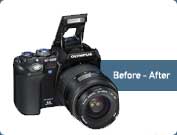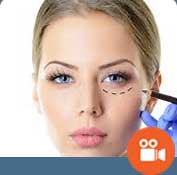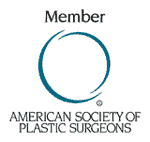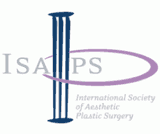Lip fillers. Non surgical technique, Injectable materials
In the late 1990s, with the expansion of plastic surgery worldwide, more and more substances and biocompatible material began to be applied by plastic surgeons in order to increase lip volume and enhance lip outline (Paris Lip). The materials include autologous fat- and tissue-grafting (from the patient himself/herself).
The non surgical technique refers to the use of such materials, and the whole procedure takes place at the surgeon’s office with the cooperation of the woman or the man (in front of a special mirror so they can watch every step of the procedure). This helps the majority of the patients feel sure of the final result. The procedure is performed either with anesthetic cream or on minor local anesthesia, and is completely pain-free.
Our philosophy is to rationally correct something and not overdo it
The most common material used by the majority of plastic surgeons internationally are based primarily on hyaluronic acid or other materials, and they differ in terms of duration and complications.
Depiction of the injectable materials procedure



Autologous Collagen Dispersion (Autologen)
It is an injectable material derived from the patient’s own skin. The material entails no risk, but results are too temporary, given the material is quickly absorbed from our body. The process cost is also high.
Collagen
Good old collagen… It is no longer used due to the test that has to precede 4 weeks earlier.
Chorium collagen
We take part of the patient’s own skin, put it under lab process to develop it into high-density, and inject it into the lips. It seems to last longer than ox collagen, but the process cost is high.
Alloderm
It refers to cadaveric material used as a solid stripe on the lips, following a special process. The procedure is performed under local anesthesia and is injected into the lip line, as well as into the lip flesh to add volume.
Radiance
It refers to a synthetic lab product containing Calcium Hydroxyapatite (osseous) and is a gel component. Some studies show that it lasts 3-5 years. Other authors (Tzikas) report, according to their study on the material in 90 patients, that 59% felt moderate to severe pain that lasted only for 3-5 minutes. Out of the 90 patients, 4 had to undergo a procedure for the removal of lip granules.
Gore-Tex
In Medicine, it is known as EPTFE, or dilated polytetrafluoroethylene. It is marketed under the names Advanta, Ultrasoft, Softform. Plastic surgeons procure the material in the form of stripes. It requires local anesthesia.
 Restylane
Restylane
Non animal hyaluronic gel. In terms of manufacturing it closely relates to human hyaluronic acid. According to the American Society of Plastic Surgeons (ASPS), 778,000 Restylan injections were administered in 2006 in the USA.
The material lasts for 6 months, and occasionally longer.
 Juvederm
- Revanesse
Juvederm
- Revanesse
In terms of manufacturing, it resembles to Restylan, but a number of surgeons report it to be softer during injection.

Artecoll
Artecoll and Artefill are no longer used due to the granulomas they
caused by the microspheres they contained.
Materials from the patient’s own body
 Fat
transfer
Fat
transfer
The procedure is based on the removal of tissues from the patient’s own
body, using the technique of micro-liposuction, and following a minor
process occasionally on the lips.
The procedure is performed under local anesthesia. The duration of the
result differs from person to person. In any case, it lasts for one year.
Fascia
Fascia is the white tissue layer coating the muscles. Typically, it is
removed with a minor incision and under local anesthesia. It is the
patient’s own tissue, and may be absorbed in one year.
Chorium auto-grafting
It pertains to tissue parts containing chorium from our own body. It is
performed under local anesthesia and part of it is absorbed within one year.












